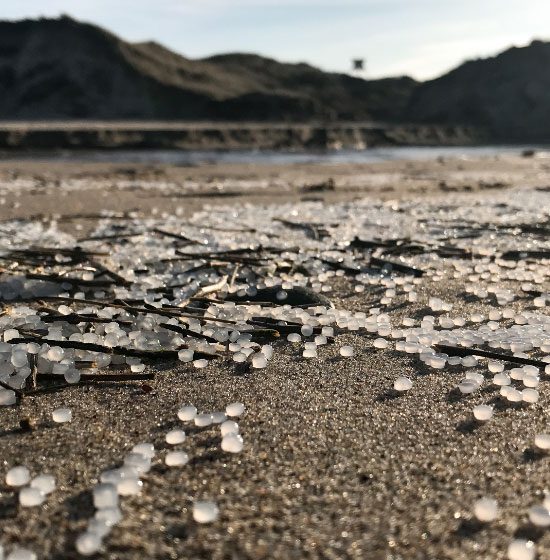Plastic & the sea
The sea holds enormous natural and recreational values, but unfortunately the world's oceans are increasingly threatened by human production, consumption and movement both on land and at sea.
This is also true here on the West Coast – that is precisely why we want to focus on what is happening in and with our sea.

Ocean plastic
Plastic in the seas is an increasing problem – also along the Danish coasts. Every year, 8-10 million tons of plastic waste end up in the oceans, and 1000 tonnes find their way to the beaches along the West Coast.
We cannot see the majority of the millions of tonnes of marine plastic in the oceans, as they are deep below the surface – in fact, around 90% end up at the bottom of the ocean. In the sea, waves, salt water and sunlight break down the plastic into smaller and smaller pieces. But the plastic is hundreds of years from completely perishing.
Plastic waste comes from cities, industries and activities at sea and has deliberately or accidentally ended up in the sea. This waste endangers life in and around the sea. Birds, fish and marine mammals risk dying when they become entangled in or eat the marine plastic.
Photo: Vangså , February 2021
Pellets
Pellets are plastic as raw material. Plastic companies use the small plastic balls to make virtually all types of plastic products and packaging. Unfortunately, spills often occur in the production chain – it can be during production or transport – and millions of the small plastic balls end up in nature and in the seas.
Pellets are a major direct source of microplastic pollution in the sea. This is also true here on the West Coast, where they can be found in the sand on all our beaches.
Photo: Bøgsted Rende , March 2020

State of the sea
Marine plastic pollution is visible to all of us when plastic waste washes up on our beaches. However, there are a number of threats to the state of the sea both above and below the surface that we cannot see.
Chemistry in the sea
Chemistry in the sea
Nitrogen leaching
Nitrogen leaching
Climate change
Climate change
fishery
fishery
Learn about the sea and ocean plastic
Take a walk on the beach and help remove plastic from our nature while learning about the sea, ocean plastic and what we can do together.
